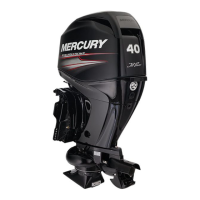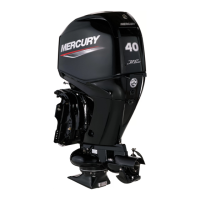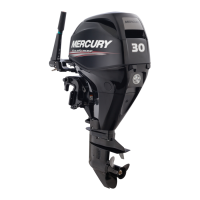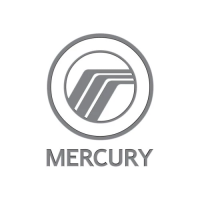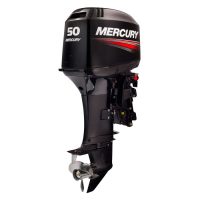FUEL AND OIL
eng 51
• The Environmental Protection Agency (EPA) requires that
any outboard manufactured after January 1, 2009, must use
low permeation fuel hose for the primary fuel hose
connecting the fuel tank to the outboard.
• Low permeation hose is USCG Type B1‑15 or Type A1‑15,
defined as not exceeding 15/gm²/24 h with CE 10 fuel at
23 °C as specified in SAE J 1527 ‑ marine fuel hose.
EPA Pressurized Portable Fuel Tank
Requirements
The Environmental Protection Agency (EPA) requires portable
fuel systems that are produced after January 1, 2011, for use
with outboard engines to remain fully sealed (pressurized) up to
34.4 kPa (5.0 psi). These tanks may contain the following:
• An air inlet that opens to allow air to enter as the fuel is
drawn out of the tank.
• An air outlet that opens (vents) to the atmosphere if
pressure exceeds 34.4 kPa (5.0 psi).
Fuel Demand Valve (FDV) Requirement
Whenever a pressurized fuel tank is used, a fuel demand valve
is required to be installed in the fuel hose between the fuel tank
and primer bulb. The fuel demand valve prevents pressurized
fuel from entering the engine and causing a fuel system overflow
or possible fuel spillage.
The fuel demand valve has a manual release. The manual
release can be used (pushed in) to open (bypass) the valve in
case of a fuel blockage in the valve.
a - Fuel demand valve ‑ installed
in the fuel hose between the
fuel tank and primer bulb
b - Manual release
c - Vent/water drain holes
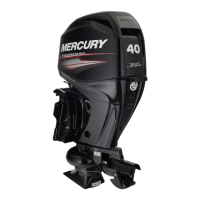
